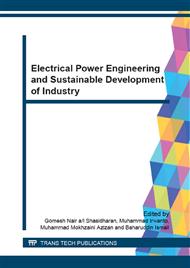p.373
p.378
p.383
p.388
p.393
p.398
p.403
p.407
p.412
Electricity Generation from Sewerage Sludge in Microbial Fuel Cell, Considering the Effect of Glucose
Abstract:
Microbial Fuel Cell (MFC) technology utilizes bacterial growth in carbon-containing substrates to generate electricity. For direct production of electricity, this MFC operates aerobically at the cathode and anaerobically at the anodes. This study tested the effect of glucose (10 %, 20 %, 30 %, 40 % and 50 % (w/w)), on the growth of bacteria, and then subsequent electricity production after 144 hours of the incubation period. Obvious substrate degradation rates (SDE) were detected in MFC fed with initial glucose concentration of 20 % (w/w) and 30 % (w/w) at 46.29 % and 40.27 %, respectively. The former generated 0.808 mW and the later was 0.736 mW. Glucose, being a basic component for growth of electrogenic bacteria influenced electricity generation. Higher the glucose concentration supplemented to the sludge, the more saturated the substrate was. Hence, inhibited the bacterial growth, and reduced electricity generation.
Info:
Periodical:
Pages:
393-397
Citation:
Online since:
September 2015
Authors:
Keywords:
Price:
Сopyright:
© 2015 Trans Tech Publications Ltd. All Rights Reserved
Share:
Citation:


